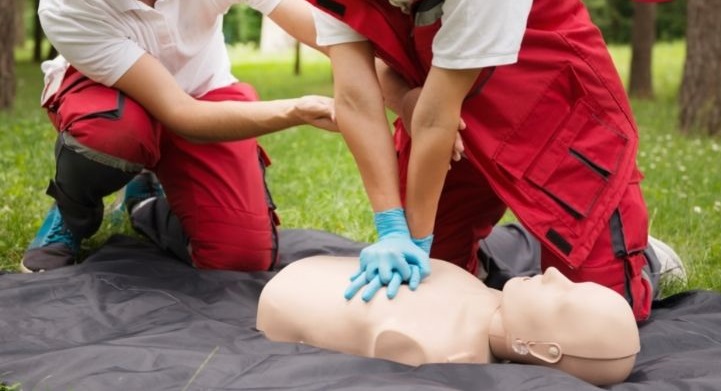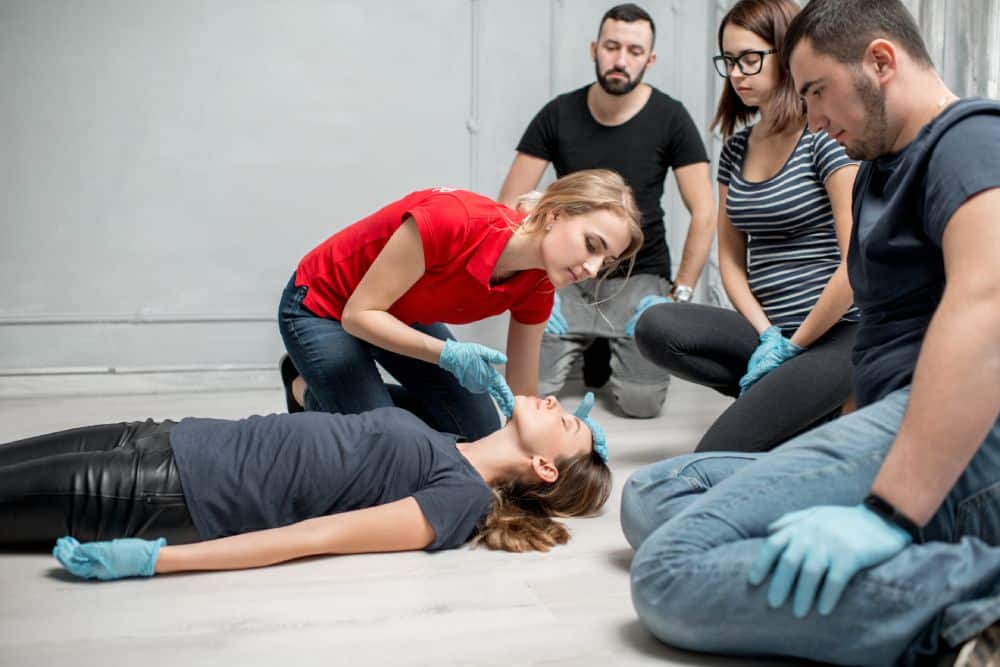Introduction
In a world where crashes can happen anytime, recognizing just how to respond successfully can make a substantial distinction. Why Every Adult Need to Enroll in an Emergency Treatment Course: A Total Guide objectives to shed light on the necessary nature of first aid training and its myriad benefits. Whether you're a moms and dad, caretaker, educator, or just somebody that wishes to be prepared for emergencies, knowing just how to supply emergency treatment can conserve lives. This guide will certainly discover the relevance of first aid courses, delve into particular abilities such as mouth-to-mouth resuscitation (Cardiopulmonary Resuscitation), and outline what you can anticipate from these invaluable classes.
The Value of First Aid Training
What is First Aid?
First aid describes the immediate care supplied to a hurt or unwell person until specialist clinical help gets here. It includes numerous methods and procedures that can stabilize an individual's problem and avoid more harm.
The Duty of Emergency treatment in Emergency Situation Situations
Every minute counts during an emergency situation. Recognizing emergency treatment can allow you to act swiftly and efficiently, which might imply the difference in between life and death.

Statistics That Stress the Requirement for Emergency Treatment Education
- According to the American Heart Organization, concerning 70% of Americans feel helpless throughout a cardiac emergency. Studies show that those trained in first aid are most likely to intervene when confronted with an emergency situation situation.
Why Every Grownup Ought to Enroll in a First Aid Course
Building Confidence in Emergencies
When you understand what to do in an emergency situation, it builds self-confidence not simply within yourself however also amongst your family and friends. Being equipped with the best abilities makes it easier to take cost when necessary.
Fostering Community Safety
By joining in a first aid course, you add to community security. Think of if every grownup had fundamental emergency treatment expertise; we would live in a much more secure environment.
Enhancing Profession Opportunities
Many professions call for or choose candidates who possess emergency treatment accreditation. Having this certification on your resume can establish you besides various other applicants.
Key Skills Taught in Emergency Treatment Courses
CPR Techniques
What is CPR?
CPR is a lifesaving technique used throughout heart attack or when a person's breathing has actually quit. It entails breast compressions and rescue breaths that help flow blood and oxygen throughout the body.
Importance of mouth-to-mouth resuscitation Courses
Taking CPR courses will certainly prepare you for real-life circumstances where someone's life might depend on your quick reaction.
Basic Life Support (BLS)
Basic Life Support consists of important abilities such as:
- Recognizing cardiac arrest Performing high-grade chest compressions Using an Automated External Defibrillator (AED)
First Help Procedures Covered
Managing Cuts and Scrapes
Learn how to correctly tidy injuries, use plasters, and identify signs of infection.
Treating Burns
Knowing exactly how to treat small burns in the house might save you from unneeded pain and difficulties later on.
The Structure of First Aid Courses
Duration and Style of Training Sessions
Most first help courses vary in size; some are finished within a few hours while others may extend over first aid courses close to me a number of days.
Online vs. In-Person Training
Both styles have their benefits:
- Online Training: Adaptability pertaining to time and location. In-Person Training: Hands-on experiment instructors giving instant feedback.
Certification Process for Emergency treatment Courses
Obtaining Your First Aid Certificate
Upon effective completion of your training course, you'll receive a first help certificate This credential can improve your reputation whether at work or home.
The Benefits of Certification
Recognition by Employers
Many companies look favorably upon workers that hold first help certificates, as it shows commitment towards office safety.
Common Mistaken beliefs About First Aid
"I Don't Need Educating Due To The Fact That I Can Google It"
While on the internet resources are useful, they can not change hands-on experience obtained through appropriate training.
"Just Physician Can Administer Emergency treatment"
This misconception protects against many individuals from taking action when they need it http://andresiyke342.lucialpiazzale.com/emergency-treatment-fundamentals-what-you-ll-discover-in-a-detailed-course most. Any individual can learn standard very first aid!
Choosing the Right Emergency treatment Course
Factors to Take into consideration When Selecting a Course
Accreditation: Make sure that the training course is identified by relevant health and wellness organizations. Instructor Qualifications: Try to find experienced experts leading the training. Course Content: Make certain it covers essential subjects like mouth-to-mouth resuscitation and wound management.Integrating First Aid Abilities into Daily Life
Everyday Situations Where You Can Use Your Knowledge
From helping children with small injuries to assisting colleagues throughout emergencies at the office-- being trained ways you're always ready!
The Future of Emergency treatment Training
As innovation evolves, so does emergency treatment training. Anticipate more interactive training courses making use of online fact (VIRTUAL REALITY) simulations for improved learning experiences.
Frequently Asked Inquiries (FAQs)
1. How long does it require to complete a first aid course?
Courses typically range from 4 hours for basic training up to several days for even more comprehensive programs.
2. Is accreditation mandatory?
While not legitimately required everywhere, having a first help First Aid Courses certificate is suggested for several professions including training and health care roles.
3. Can I recertify my emergency treatment skills?
Yes! The majority of organizations advise recertification every two years to stay upgraded on best practices.
4. Are there age constraints for attending?
Typically talking, a lot of training courses accept participants as young as 12 years of ages; nevertheless, they must be come with by an adult if under 18.
5. Will my company cover program fees?
Lots of business use assistance or compensation for staff members looking for accreditation; check with HR for specifics!
6. What happens if I'm awkward carrying out CPR?
It's all-natural! Exercising these strategies during training aids construct self-confidence with time to ensure that you're prepared when it counts most.
Conclusion
Enrolling in a first help course isn't just advantageous; it's essential for each adult aiming to make their community much safer while boosting personal abilities that can someday conserve lives. With knowledge comes power-- power that permits us all to step up when emergency situations arise instead of standing by helplessly enjoying occasions unfold.
So don't wait-- take that step today! Whether with standard training classes concentrating on fundamental practices or advanced sessions covering intricate situations like CPR, keep in mind: Every 2nd counts!

This extensive overview highlights why every grownup must enlist in a first help course, stressing not only its importance yet also its functionality in daily life situations-- from work environments busy with activity down onto quiet property streets full of family members eager for peace-of-mind preparedness versus unfavorable conditions occurring unexpectedly!
